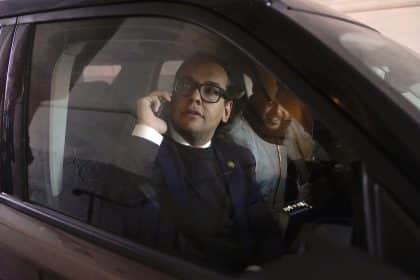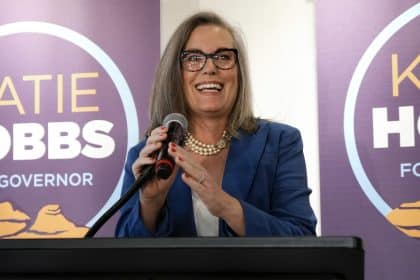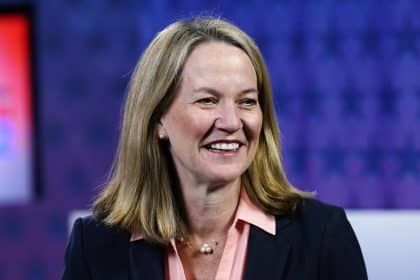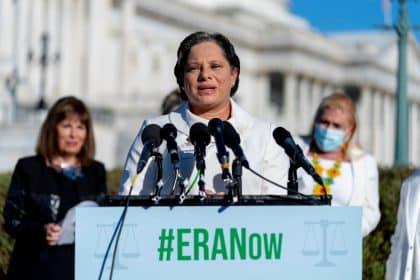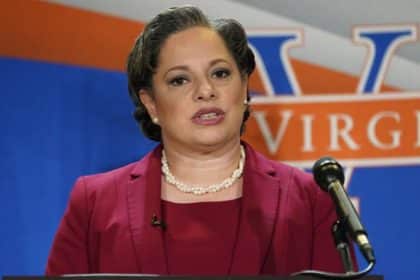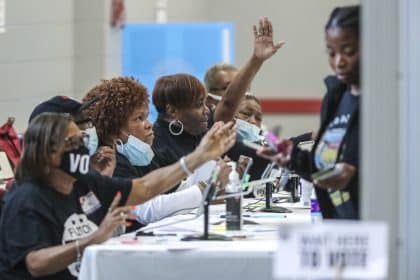2022 Election Features Few Climate Initiatives, but Those on the Ballot Are Big

WASHINGTON — In most recent years, a slew of climate, energy and environmental initiatives have appeared on state ballots across the nation.
This year, perhaps as a result of the Biden administration’s all-out push to reduce greenhouse gas emissions to 50% below 2005 levels by 2030, the nonprofits, community groups and others that promote such measures appear to be taking a breather.
As this Election Day approaches there are only two ballot measures of note, though both are huge.
In New York state, a $4.2 billion initiative officially known as the Clean Water, Clean Air, Green Jobs Bond Act, is the largest environmental protection measure in the state’s history.
If voters approve it on Tuesday, it would fund environmental projects in four major areas.
About $1.5 billion would go to climate change mitigation, including funding for zero-emission school buses and strategies to reduce urban heat.
Another $1.1 billion would go to ecosystem restoration and reducing flood risk, including coastal rehabilitation and voluntary buyout programs.
Up to $650 million would fund land conservation and recreation, including farmland preservation.
And at least another $650 million would go to water quality improvements and climate resilient infrastructure.
The measure would also require that 35% of the funds be spent in disadvantaged communities.
An economic impact analysis found that it could create or support as many as 84,000 jobs statewide.
On top of all that, its provisions would unlock federal matching funds for most if not all of the projects.
Democratic Gov. Kathy Hochul has endorsed the proposal, while her Republican opponent, Rep. Lee Zeldin, has refrained from taking a position on it.
Meanwhile, the state’s Conservative Party, which typically aligns with the state GOP in election matters, has come out against it, while fiscal watchdogs like the Citizens Budget Commission, have said they have grave concerns about its consequences for the state’s debt.
Their opposition or coolness to the plan is offset by green energy groups and advocates of the switch from fossil fuels to renewable energy who are urging the public to “flip the ballot” and support the measure.
A coalition of environmental groups, land trusts, labor unions and farmers has also come out in favor of the ballot measure, jointly spending more than $1 million for advertising urging a yes vote.
“With the Environmental Bond Act on the ballot, voters have a once-in-a-generation opportunity to protect our environment and improve the quality of life in every corner of the state,” said Julie Tighe, president of the New York League of Conservation Voters, in a written statement.
“With investments in everything from water infrastructure and lead service line replacements, from flood protections to street trees, and from community gardens to clean school buses — all while supporting thousands of good-paying jobs and investing in disadvantaged communities — the Environmental Bond Act is essential to creating a healthier, more prosperous future for all New Yorkers,” she said.
The League of Women Voters of New York State has also come out in favor of the proposition, saying in a statement that it is in New York state’s best interest to have sources of funding to accomplish its “ambitious and essential goals.”
“By voting ‘yes’ on election day to the Environmental Bond [Act], New Yorkers will authorize New York state to have available the option of issuing bonds to investors to fund many of the essential projects needed to achieve these goals,” said Laura Ladd Bierman, the league chapter’s executive director.
California Proposition 30
The other mega-noteworthy measure is California Proposition 30, which would increase the income tax for people making over $2 million a year by 1.75% for a 20-year period (or until three years after statewide emissions drop to 80% of 1990 levels) to fund the transition to zero-emissions vehicles in the state and bolster wildfire prevention in the state.
If the proposition is approved by voters, 35% of the expected $3.5 billion to $5 billion the tax hike would raise annually would flow into a zero-emissions vehicle infrastructure fund that would build out the state’s electric vehicle charging infrastructure.
Another 45% would go to rebates and other incentives for electric vehicle purchases, with at least half of all the EV-related money being spent in low-income communities.
The final 20% of the money raised would be dedicated to wildfire prevention and suppression, with a priority on hiring and training new state wildland firefighters.
One of the proposition’s biggest opponents is Democratic California Gov. Gavin Newsom, who has called the measure a “sinister scheme” by Lyft and other rideshare companies to grab a huge taxpayer-funded subsidy.
That’s because in order to meet California’s Clean Miles Standard, rideshare companies like Lyft will have to log 90% of their miles in electric vehicles by 2030.
As a result, Lyft alone has reportedly spent over $45 million to support the proposition, in the apparent hope the state funding will offset its cost — at least according to the measure’s opponents.
But critics of Newsom’s stance, including members of his own party, have suggested he’s simply engaging in political grandstanding, noting that much of the newly raised funding would go to programs he’s already included in his own state budget.
Others note that the incentive provided to those buying electric vehicles would go to rideshare drivers, not to the companies themselves.
And a report released in early October suggested the measure would dramatically help the state make major strides towards meeting its climate goals while supporting middle- and low-income residents.
Organizations including the American Lung Association and the Union of Concerned Scientists have joined with labor unions and environmentalists to endorse the proposition, which they argue will help reduce the air pollution caused by wildfires and gasoline-powered cars.
The most recent poll on the proposition, released by the University of California, Berkeley, in early October, found 49% of voters supporting the measure, 37% opposing it and 14% undecided.
Rhode Island
While nowhere near the magnitude of the other two ballot measures, there is a smaller $50 million environment and recreation bond measure in Rhode Island that would fund municipal climate resiliency.
Question three is a $50 million environment and recreation bond measure that would fund small business energy loans, watershed and forest restoration, and land acquisition.
The largest share of the money, about $16 million, however, would go to municipal climate resilience, helping communities improve coastal habitats and floodplains, and strengthen infrastructure.
While polling on question three is scant to nonexistent, it should be noted that Rhode Islanders haven’t rejected a bond measure since 2006.
Dan can be reached at [email protected] and at https://twitter.com/DanMcCue.



















